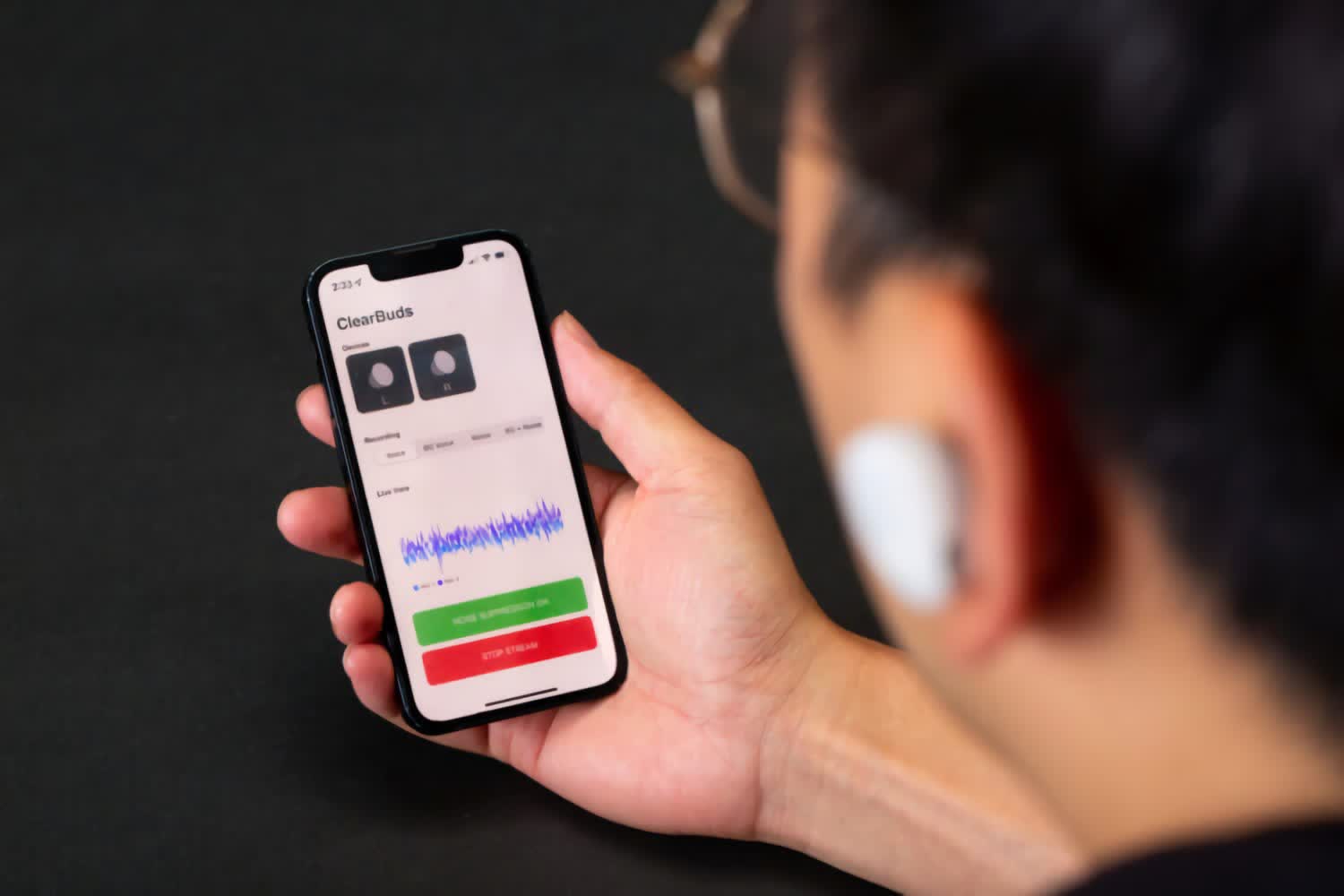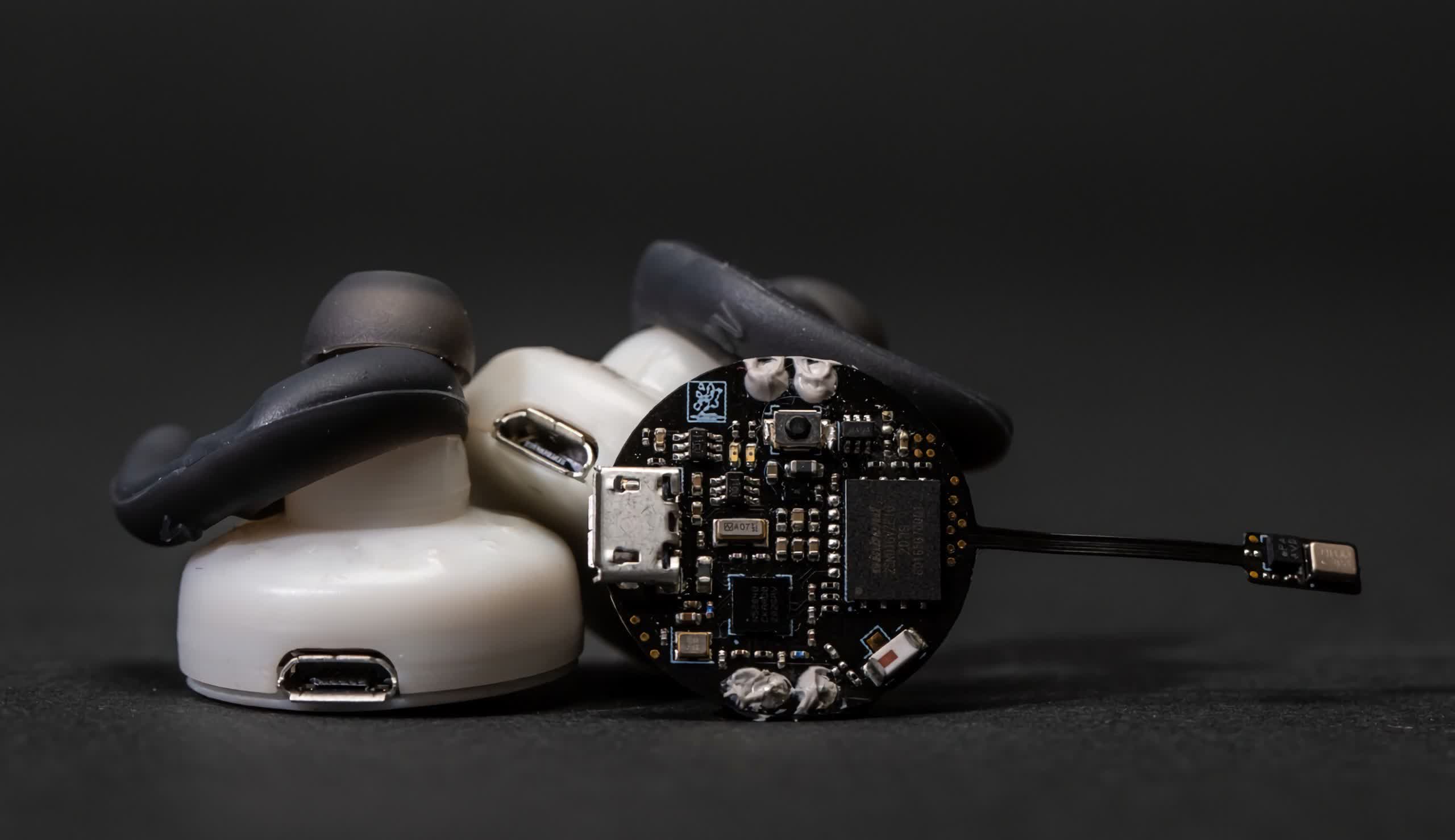In context: Most newer earbuds come with some form of noise cancelation. How well it works is hit or miss. Apple AirPods are pretty good. Cheaper brands like Earfun are mediocre. But none seem to cancel external noise 100 percent.
Engineers from the University of Washington have developed a set of earbuds that achieve almost complete noise cancelation using machine learning. The earbuds, dubbed ClearBuds, were recently demonstrated at the Association for Computing Machinery International Conference on Mobile Systems, Applications, and Services. Besides the obvious application in audio-wear, the AI cancelation technique could be used in home speakers and to help robots with location tracking.
A short video (below) shows the earpieces silencing a vacuum cleaner and even another person's voice. The method effectively isolates the speaker's voice with zero noise interference. Other tested methods still allow some of the background noise to get through. Of course, a hands-on demo would be more convincing.
Like other noise canceling technology, ClearBuds uses dual microphones to capture the speaker and external sounds. However, the way it processes the signals is entirely different.
Maruchi Kim, a doctoral student at UoW's Paul G. Allen School of Computer Science and Engineering, explains that each earbud creates two synchronized high-resolution audio streams containing data on the direction of each sound captured. This technic allows the AI to create a spatial audio profile of the environment and isolate the speaker's voice and the noise sources more precisely than dual directional mics.
"Since the speaker's voice is close and roughly the same distance from the two earbuds, the neural network was trained to focus only on their speech and eliminate background sounds, including other voices," the study's co-author Ishaan Chatterjee explained. "This method is largely similar to how your ears work. They use the time difference between the sounds in your left and right ears to determine which direction the sound came from."

Most high-quality earbuds have mics on each bud, but Allen says that only one is actively sending audio for processing at any given time. With ClearBuds, each earpiece constantly sends simultaneous audio streams. This method required the scientists to develop a specialized Bluetooth networking protocol for the earbuds that synchronizes the two streams to within 70 microseconds of each other.
Although ClearBuds are quite a bit larger than some of the more popular compact earbuds available, the AI processing still has to be conducted by a connected device that can run the AI. The team is working on making the neural network algorithms more efficient so that processing can occur on the earbuds.
The researchers did not mention a commercialization plan. However, once their work is fully complete, manufacturing a commercial product or licensing the technology is highly likely.
